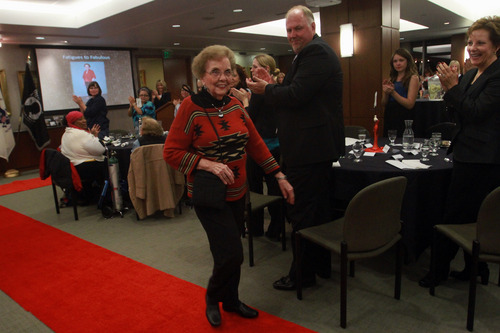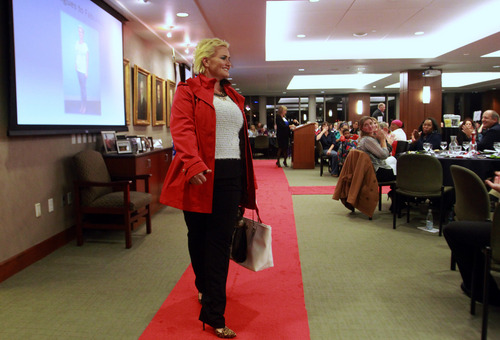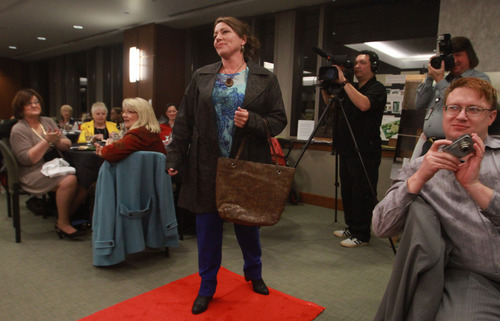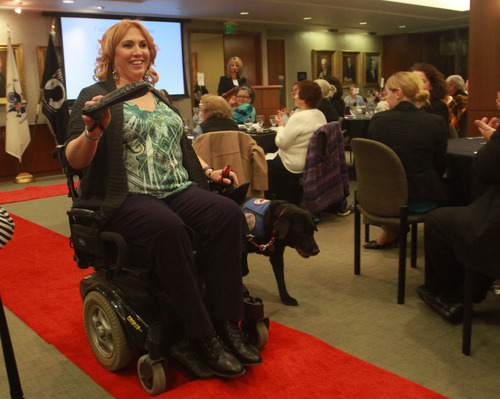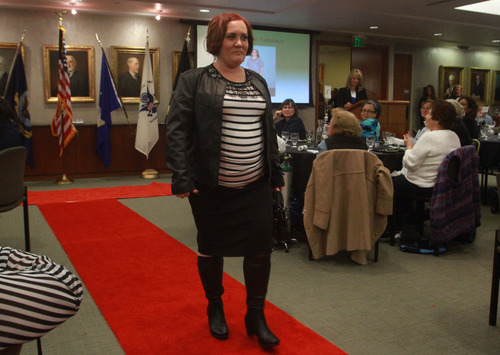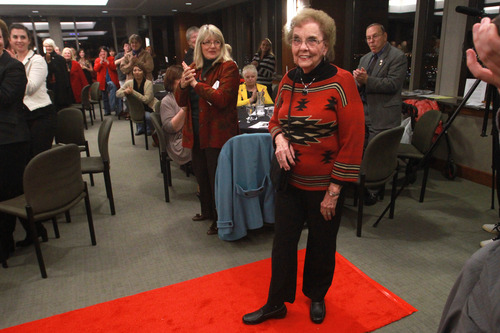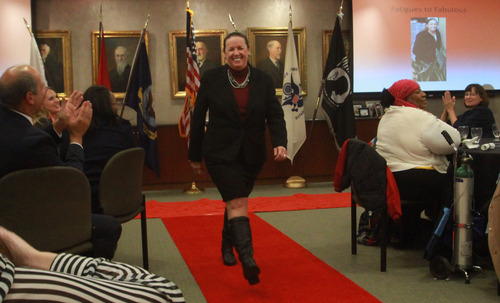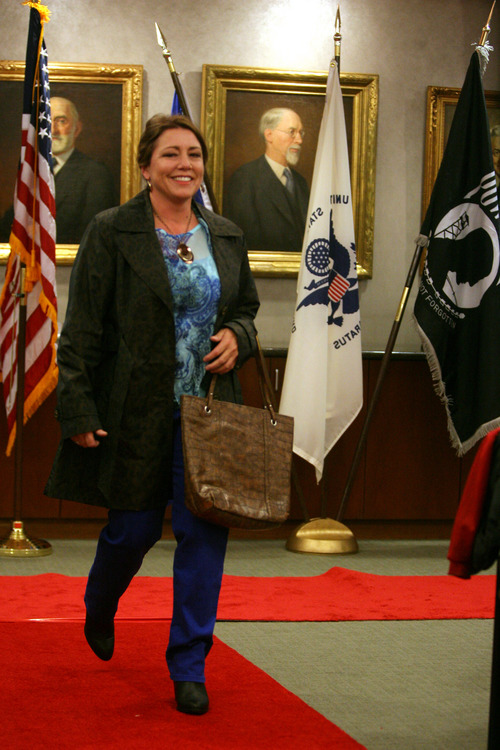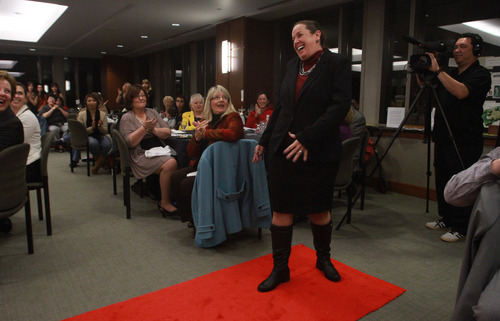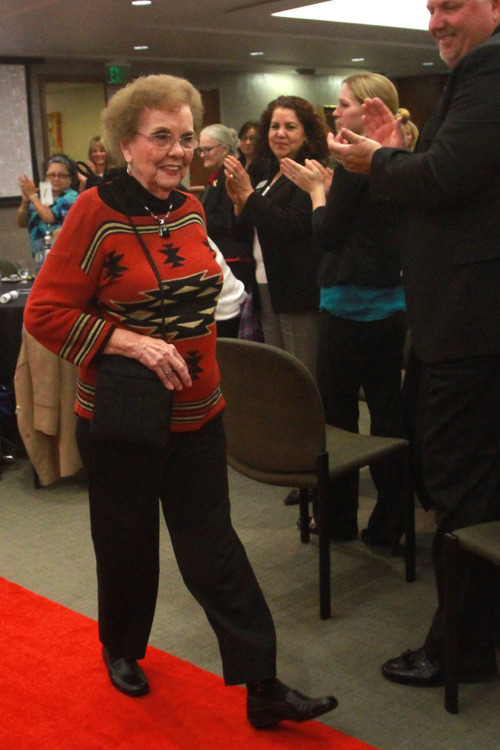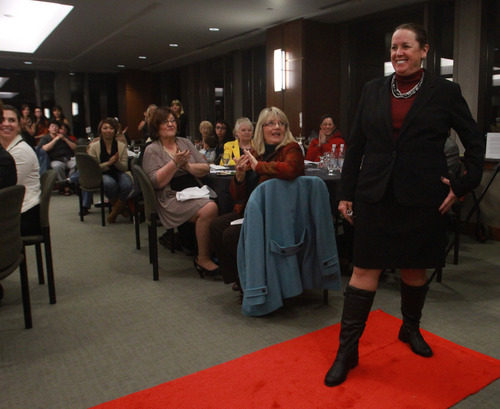This is an archived article that was published on sltrib.com in 2013, and information in the article may be outdated. It is provided only for personal research purposes and may not be reprinted.
Brenda Joy Talford didn't just exchange sweat pants for a salmon-colored skirt and brown sweater vest, cinched with a brown belt Monday night. As the 51-year-old Army vet walked on a red carpet during an event dubbed Fatigues to Fabulous, she took steps toward abandoning a life of seclusion brought about by post-traumatic stress disorder for one in the world.
After her turn on the runway, Talford said she had conquered a mountain by letting professionals pull her short brown hair to the side and do her makeup. Recently diagnosed with PTSD from a military sexual assault in the 1980s, Talford said she was in the habit of making herself as plain as possible.
But that ended Monday night. "I want to get myself out there and stop isolating myself," she said. "I feel worthy right now, which I didn't before."
She was one of 11 women who modeled clothes they picked out, and get to keep, from Kohls department store in front of about 200 women veterans at Zions Bank building in Salt Lake City. It was the 10th year the VA Salt Lake City Health Care System has held a women veterans celebration, but the first time it included the fashion show.
The women took turns strutting on the red carpet, walking — often bee-lining for the exit — to songs they had picked out, including "Karma Chameleon" by Culture Club, the Eagles' "Hotel California" and a boogie woogie tune. At the end, all 11 stood together, with the song "American Woman" playing in the background.
The goal is to raise awareness that women are vets, too, and to help them in their transition from military to civilian life.
"[In the military] they're constantly trying to justify they're as strong, they're as powerful as a man. Wearing makeup and wearing the latest clothes of the day is not part of their routine," said Gina Painter, women's veterans program manager at the VA hospital system in Salt Lake City.
When women return home, "They have to refocus on themselves and discover what that identity of being a woman is. That hasn't been something that has been valued in the military," she said.
If it all seems a little retro, it's not meant to be. And the veterans who participated didn't think it was.
"It helps to remind us we're feminine still," said Jenna McMichael, who was a human resources specialist in the Army for 10 years. "We had to do tough things and [experienced] tough times and now we have this beautiful event to feel womanly again."
The 27-year-old chose black slacks, a white dress shirt, red trenchcoat and — this gift made her smile — leopard-print high heels in the hopes of getting a job as an acupuncturist.
"Female vets are female just as much as we are soldiers," said Deborah Caldwell, who was a senior airman in the Air Force and chose a black and white outfit to help her get an office job. Her clothes, she said, say "I'm a confident, independent woman."
Fatigues to Fabulous (F2F) is a national campaign that was launched with a show on the runway at New York's Fashion Week in 2011. Its goal is to raise awareness about the challenges women face when they return home, to help them with job training skills (from interviewing skills to workplace attire) and to change the image of the veteran population — which many perceive as male only — to include 2.2 million women vets. There are also 203,000 women in active duty, or almost 15 percent of the total.
Utah's VA hospital serves 3,600 women vets, just a fraction of the 16,000 eligible for services in Utah and parts of surrounding states.
Some of those unique challenges include homelessness — women vets are four times more likely to be homeless than male vets, according to F2F — and sexual trauma. The VA estimates 1 in 5 women have experienced military sexual trauma, which includes sexual assault or repeated threatening sexual harassment, compared to 1 in 100 men. And there may be differences in how women and men are affected by health conditions including post-traumatic stress disorder and traumatic brain injuries, according to F2F.
For Jen Anderson, 60, being thought of as feminine is an honor.
She served in the Navy during Vietnam, when she was a man. She's lived full-time as a woman for four years and was asked to join the fashion show while at an outpatient women's recovery group at the VA hospital. She said a woman in the group said Anderson was the "girliest girl" in the group.
The fashion show drives home the point that soldiers are women, she said. "It lets us know … no matter what, we are still women. That's a trait we held dear to us even though we were in a man's world," she said. "To think a real, genetic woman thought I was the girliest girl made me feel really good."


